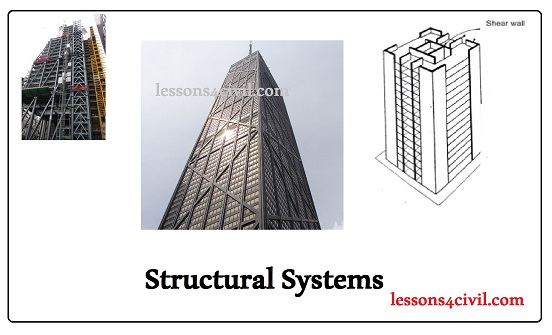Common structural systems
In simple words structural system define how the load are transferred to the foundation. Lateral and vertical loads are distributed among different structural members until they are applied to the ground. This article is aimed to give the students insight into what happens inside building structures.
Vertical load transfer
The first members which are subjected to vertical loads are the floors. These floors distributed the vertical stresses between girders with respect to their position in the plan. Each beam has been connected to 2 columns at its end point. So the next member with are subjected to vertical loads are columns. And finally the foundation absorb the vertical load and transfer if to the soil within the allowable range of soil bearing capacity. Through this mechanism, each of structural member must be designed properly to be able to tolerate their share of the vertical load. If any of these members fail to fulfill its duty the whole structure is likely to collapse.
Lateral loads transfer
There are several option for the designers to restrict the lateral deformation of the building. these items are:
- To design strong (fixed) connection between beams and columns
- To design braces
- To design shear walls
These are the common traditional solutions to provide enough lateral stiffness for the building. however other modern solution have come into view since recent years. Some of these structural systems are mentioned below:
- Framed tube structure
- Tube in tube structure
- Multi tube structure
- Mega-braced structure
- Out trigger-braced structure
- Core structure
In the future posts I will try to explain the main advantages of each structural system. A wise designer is always aware of the theories behind these methods and take advantage of them in order to achieve an optimized design.



Comments